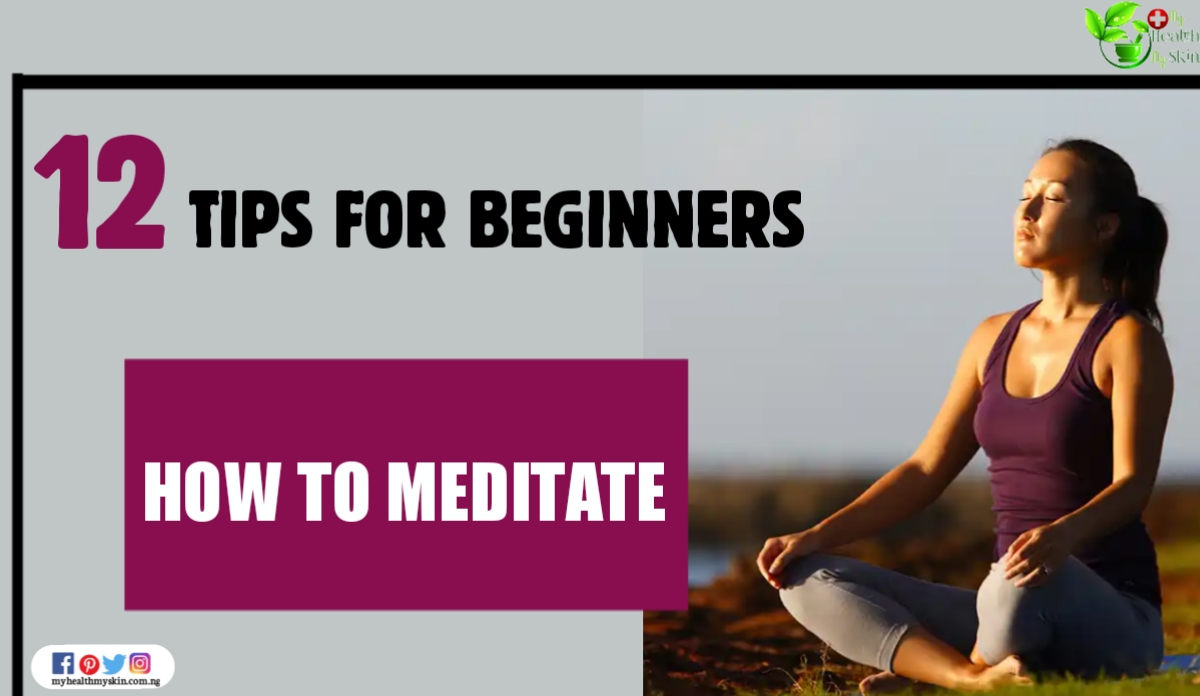The purpose of meditation is to focus and calm your mind, eventually bringing you to a higher level of awareness and inner calm. Life can get a little crazy sometimes.
The frenetic pace and all the demands of everyday life often leave people stressed, overwhelmed and unhappy, and when that happens learning how to meditate is a great option.
On the one hand, meditation is a tool. It can help you fight stress, promote physical health, help with chronic pain and can make you sleep better, feel happier, calmer and also be more present.
But on a deeper level, meditation is an entrance into the unknown. It helps people get a sense of the mystery of who we are, what our mission is, where we are going, etc.
When you learn how to meditate, you will realize how uncontrollable the mind is.
You may be surprised to learn that you can meditate anywhere and anytime, allowing yourself to achieve a sense of tranquility and peace no matter what is happening around you.
That’s why we’re going to introduce you to the basics of how to meditate, allowing you to begin your journey on the path of enlightenment and bliss.
[lwptoc]
How to Meditate: 12 Tips for Beginners

1. Decide How Long You Will Meditate
Before understanding how to meditate, you must decide how long you will meditate. While many experienced meditators recommend 20 minutes twice a day, beginners can start doing it for about 5 minutes once a day.
You should also try to meditate at the same time each day. If you will be meditating for 15 minutes when you first wake up, or five minutes during your lunch break, try to make meditation an unshakable part of your daily routine.
Once you have chosen the period you are going to meditate on, try to stick to it.
Don’t give up simply because you think it’s not working, as it will take time and practice to reach successful meditation. Right now, the most important thing is to keep trying.
Although you want to constantly keep track of your meditation time, it’s not good to be constantly checking your watch, so choose a soft alarm to alert you when your practice is over.
2. Maintain Proper Posture For Meditating
If you sit in a chair or cross-legged on the floor, make sure your spine is in an upright position with your head up.
Your pelvis needs to be tilted forward enough to keep your spine centered. If you’re slipping, your mind will wander.
The traditional hand position involves placing them in your lap, palms facing up, with your right hand on top of your left.
However, you can also rest your hands on your knees or let them hang down by your side.
The most important thing is that you feel comfortable, relaxed, and with your torso balanced so that your spine supports your full weight from the waist up.
The mind and body are intertwined. If your body is well balanced, your mind will also be in balance. To straighten up, imagine that your head is touching the sky.
3. Eyes
Try to keep them open as this will allow you to be more present.
Just lower your eyes and keep a gentle gaze, but often for those learning how to meditate it’s easier to start with them closed as this will block your external stimulation and prevent anything from distracting you.
But at the same time, if you close your eyes, you’re more likely to drift off into thoughts and stories, but now the most important thing is to do what’s comfortable for you.
Some people find that closing your eyes is much more effective. It’s good to experiment and see how you feel better.
4. Focus On Meditation
In ordinary consciousness, people are rarely present. For example, they sometimes drive the car as if it were on autopilot, and they keep preoccupied with thoughts.
Suddenly, he arrives at his destination and doesn’t remember anything else that happened in the car.
That’s why learning how to meditate is a wonderful way to wake up to your life, otherwise people end up missing most of their experiences because they are somewhere else in their mind.
In ordinary life, people tend to equate focus with concentration. It’s like using the mind as a concentrated beam of light.
But in meditation, this kind of mind is not helpful as it is too sharp and nervous.
Focusing on meditation means paying attention to whatever you place at the center of your awareness, so it’s best to use your breath as your focus.
It’s like a natural door that connects the “inside” with the “outside.”
Zen Master Master Toni Packer says, “Attention comes out of nowhere. It doesn’t have a cause. She doesn’t belong to anyone.”
5. The Breath
Paying attention to your breath is a great way to ground yourself in the present moment.
Watch your breath go in and out. There is no need to regulate your breathing, just make it natural.
The most basic and universal of all breathing techniques in meditation is where a person chooses a spot above their navel and focuses on that spot in their mind.
Become aware of the rise and fall of your abdomen as you breathe and inhale.
Make no conscious effort to change your breathing patterns, just breathe normally.
Try to focus on your breath and just your breath, but don’t think about it, as if the last was smaller than the last, etc. Just try to get to know her and be aware of it.
Some mental images that can help you are: imagining a coin on top of your navel, rising and falling as you breathe, imagining a buoy floating in the ocean, rising and falling with the waves, or a lotus flower on your belly, which goes losing its petals as it breathes.
- Breath Counting Technique
Another tip is to try an old practice on how to meditate. If you’re having a hard time settling down, try counting your breath. On your silent exhalation, count “one”, then “two”, and even “four”. Then go back to “one”.
Whenever you notice that your thoughts are straying, have already strayed or find yourself counting “thirty-three”, simply go back to “one”. In this way, the “one” is like coming home to the present moment. It’s good to go back without looking back.
Don’t worry if your mind starts to wander, you’re a beginner and like anything else, it gets better as you practice.
Just make an effort to refocus your mind and not think about anything else.
Engage your diaphragm and fill your lungs, just don’t force your breath. Notice how it feels in your nose, throat, chest, and belly as it flows from the inside out.
6. Thoughts When Meditating
When you notice your thoughts, let them go gently, returning your focus to your breath. Don’t try to stop thoughts, it will only make you feel agitated.
Imagine they are unwanted visitors at your door: acknowledge their presence and politely ask them to leave.
Then let the soft light of your attention shine on your breath.
7. Emotions In Meditation
It is difficult for you to learn how to meditate if you are struggling with strong emotions.
This is because some emotions tend to produce multiple stories in your mind. Especially anger, shame and fear.
They create stories that repeat themselves over and over in the mind. Anger and shame keep you thinking about past events. Fear looks to the future with stories that start with: “What if…”
The best way to deal with strong emotions in meditation is to focus on your bodily sensations that accompany the emotion.
For example, it could be a bandage that tightens your chest, or a burning belly.
Let go of those stories and focus on your body, this way you’ll be honoring your emotions, but not getting tangled up in the stories.
8. Silence
Silence is healing. There are many songs for meditation, but nothing beats simple silence. Otherwise, the music or sounds just drown out the conversation in your mind.
When you sit silently, you really experience what your mind is really doing. There is firmness and serenity when you sit in silence.
9. Meditation Place
Ideally, you should learn how to meditate somewhere calm and peaceful.
This will allow you to focus exclusively on meditation, avoiding bombarding your mind with outside stimuli.
Try to find a place where you won’t be interrupted during your meditation, whether it lasts for five minutes or half an hour.
The space doesn’t have to be very big, the important thing is that it be something private.
For those new to meditation, it is especially important to avoid any outside distractions. Turn off the television, cell phone, or any other noisy device.
If you’re going to play music, choose music that’s calm, smooth, and repetitive so it doesn’t get in the way of your concentration.
Another option is to turn on a small water source – the sound of water can be extremely calming.
Understand that the meditation space does not have to be completely silent.
The sound of a lawn mower or a barking dog, for example, should not stop meditation from taking place.
In fact, being aware of these noises, but not letting them dominate your thoughts, is an important component of successful meditation.
Meditating outdoors works for many people. As long as you don’t sit near a busy street or other source of noise, you can find peace under a tree or sitting on some grass in a flower garden.
10. How To End Your Practice
When you are ready to finish your practice, bring your conscious attention back to your surroundings. Acknowledge your presence in the space around you.
Gently wiggle your fingers and toes. Start moving your hands, feet, arms and legs. Open your eyes. Move slowly and take your time to get up.
11. Practice Often
Consistency is more important than quantity. Meditating for 5 minutes every day will reward you with many more benefits than meditating for two hours once a week.
12. Enjoy
Above all, it is important to enjoy meditation, to enjoy this moment. You can try to sit up with a small smile. Be kind to yourself and enjoy. To see more post on Spiritual Health click here.

Do You Believe You Can Learn How To Meditate By Practicing Alone? Is There A Prone Place In Your Home? Have You Ever Tried? Comment Below!






